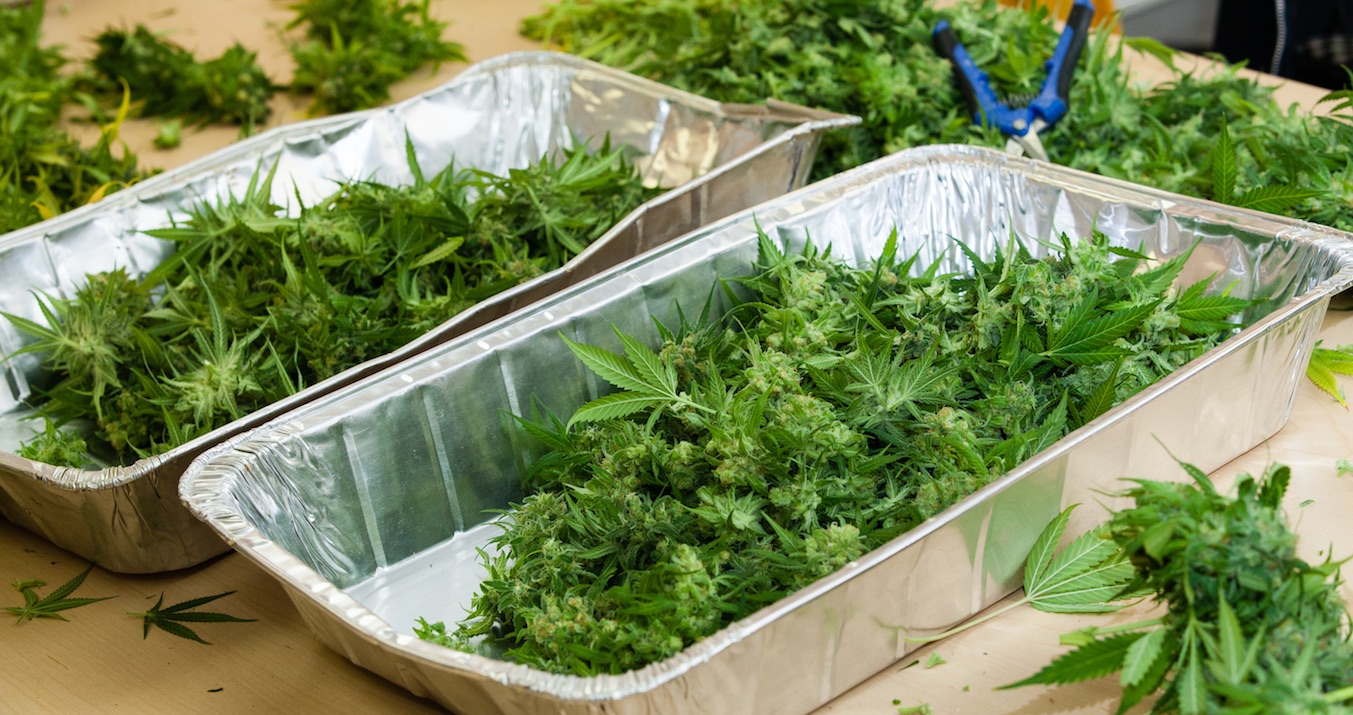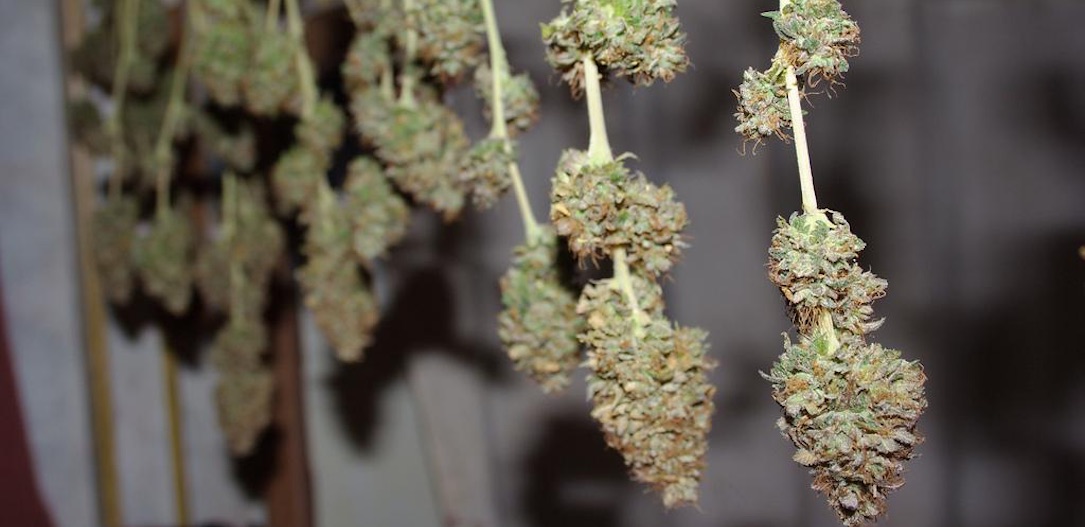- Thoroughly trimming and cleaning your buds after harvesting is key if you want to transform your cannabis into a quality end product.
- While some growers opt for dry trimming, others prefer wet methods.

After months working nonstop on your crop, it is time for the finishing touch. Properly trimming the leaves and branches of your plants is an essential step if you want your cannabis to be good. The process serves different purposes, one of which is making the end product aesthetically appealing: properly trimmed cannabis consisting of uniform, smooth buds makes a good impression, is easier on the eyes and does not give a sense of carelessness.
And not just that, the leaflets have fewer trichomes than the flowers, reducing the potency and the quality of the buds, so if you thoroughly eliminate the tiny leaves from the flowers, the resulting cannabis will be much richer in cannabinoids. Worse still are the fan leaves: because they are more prone to absorbing moisture, they produce a smoke that is harsh and unpleasant. Plus, properly trimmed buds ensure a steady moisture level during curing, and this results in a more flavourful smoking experience that is softer on the palate.
Some growers trim the fan leaves several days before harvest, but the key question comes afterwards. Dry or wet trimming: which works best? Ultimately, it's all about deciding when to cut down your plants - before or after the drying process. Both options come with pros and cons, so it is the type of grow and the working environment that will tip the scales in favour of one trimming method over the other.
Dry trimming
Quite in vogue these days, dry trimming involves hanging the harvested branches to dry upside down - after pulling off the fan leaves but before snipping the un-manicured buds. Because they handle large amounts of cannabis, wet trimming is the preferred method of large-scale commercial producers.
The type of grow and the working environment should determine which trimming method you choose.
By keeping the leaflets, the buds dry more slowly and more evenly because the extra plant matter keeps the moisture for longer. Dry trimming, however, is not without risk, particularly in wet climates, where it can cause mould to grow on the crop because of excess moisture content.
Outdoor large-scale producers and guerrilla growers have long opted for dry trimming mostly because they don't have the time to work in wet conditions. This is why they harvest as soon as practicable and transport the product to an indoor warehouse for a more leisurely drying process.

Dry trimming takes at least twice as much time as wet trimming, plus the 10-15 extra days of the drying process. Once dry, you will have to remove the curled leaves surrounding the buds, which can be done with trimming scissors. The process, though, might prove a bit too strenuous.
Accordingly, large-scale producers who dry trim their buds generally invest in professional trimmers. These are electric machines specifically designed for dry trimming that allow growers to get done with their trimming in a matter of hours, instead of days. The only downside here is the price.
Wet trimming
Trimming immediately after harvesting is probably the most natural way to go about it. In fact, it is the method preferred by most growers, who start trimming either after cutting down the plant or a few days earlier, when the plant is still alive. Most excess plant matter can be easily removed by hand, but you will need a pair of scissors and a magnifying glass at some point.
Dry trimming takes at least twice as much time as wet trimming.
Immediately after harvesting, the leaves, stems and buds are moist and more flexible, making the process far less stressful than when the flowers are dry and sticky, and have curling, tangled leaves. Accordingly, the buds can be handled more easily, i.e. you can bend them to get better angles and obtain a spotless end product.
Once you remove the biggest leaves, you will see some tiny leaves protruding from the buds - you can see the tips but not the stems. These are known as sugar leaves - because of their trichome 'frost' - and need to be trimmed to about half of their length, removing just the protruding part. Proceed carefully and gently so that you get a rounded shape that is smooth to the touch.
This of course will take a toll on the weight of the end product but will in return result in top class smoke and flavour. Plus, you can use the excess trim that is covered in trichomes for hash and extracts.

If there is a downside to wet trimming, it is that the process is very time consuming, being more suitable for home growers with small crops. That's why, come harvest, commercial producers are always on the lookout for professional trimmers. A large cannabis crop may take several days of wet trimming by hand, a task that is as arduous as it is expensive if it means hiring extra staff. Accordingly, many large-scale producers opt for employing staff but for dry trimming, which is faster than trimming wet and allows for better bud appearance than machine trimming.
Undecided? Try a combination of both!
As you can see, both trimming techniques are valid and viable. The difference lies in the size of the crop, with small producers sticking to the cheapest method, namely wet trimming, and large producers with multiple harvests per year investing in professional equipment that has been specifically designed for dry trimming.
However, if you're still torn between the two techniques, think no more: a combination of both may be the key to success. You can remove most of the leaves and twigs immediately after harvesting, when the plant is still moist, but not all so as to ensure optimum drying. Once the buds are dry, finish off the job for a spotless finish before moving on to curing. This double trimming might look like a lot of work, but will reward you with perfectly neat buds that are potent and intensely fragrant.




Comments from our readers
Did you like this post?
Your opinion about our seeds is very important to us and can help other users a lot (your email address won't be made public).